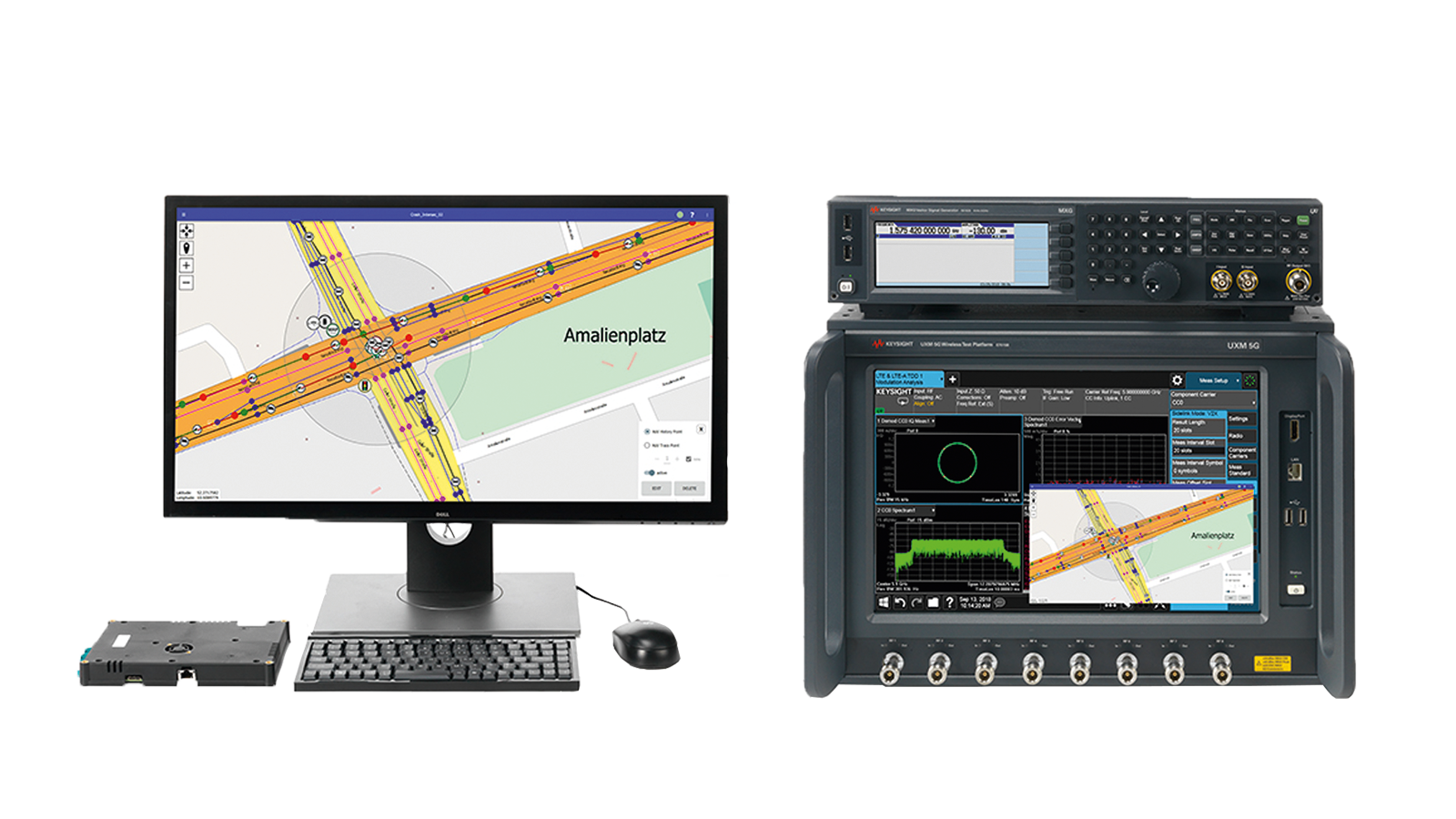Choose a country or area to see content specific to your location
-
PRODUCTS AND SERVICES
-
Oscilloscopes
-
Analyzers
- Spectrum Analyzers (Signal Analyzers)
- Network Analyzers
- Logic Analyzers
- Protocol Analyzers and Exercisers
- Bit Error Ratio Testers
- Noise Figure Analyzers and Noise Sources
- High-Speed Digitizers and Multichannel DAQ Solutions
- AC Power Analyzers
- DC Power Analyzers
- Materials Test Equipment
- Device Current Waveform Analyzers
- Parameter / Device Analyzers and Curve Tracers
-
Meters
-
Generators, Sources, and Power Supplies
-
Software
-
Wireless
-
Modular Instruments
-
Network Test and Security
-
Network Visibility
-
Services
-
Additional Products
- All Products, Software, Services
-
- Learn
- Support
What are you looking for?
C-V2X Autonomous Drive Emulation
Enhance validation with synchronous testing of communication-based systems
Highlights
Enhance Validation with Synchronous Testing of Communication-based Systems
- Incorporate application-level testing that integrates C-V2X scenarios with HIL systems
- Validate more of the system earlier in the development cycle
- Cover cases for all major regions: China, Europe, and the United States
- Verify performance relative to the relevant ITS stack, ensuring accurate communication to and from the vehicle
- Easily set up predefined scenarios that address Day 1 Use Cases in the lab
- Accelerate detection of bugs and interoperability issues across the application layer, ITS stack and PC5 link level
- Reduce the need for costly, often non-repeatable road testing
The core purpose of V2X communication is to provide standardized safety services by means of broadcast messages alerting individual vehicles to the presence, position, trajectory, and speed of surrounding vehicles. Communication between vehicles, and with roadside units such as traffic lights, is provided by a wireless link in the 5.9 GHz band. This has a range of 300 meters and is not limited by line-of-sight, enabling vehicles to “see” and detect others that may be obscured by buildings, trees, and so on.
In the immediate term, V2X applications are being defined in the form of Use Cases by standards bodies in Europe (C2C Forum), North America (SAE), China (C-SAE), and elsewhere. In the longer term, applications such as those being considered by 5GAA will be developed using V2X information along with other sensor data. Collectively, these define the scale and scope of testing that must be applied to ADAS designs that incorporate V2X.
- Transmitter Testing: Power, error-vector magnitude (EVM), frequency accuracy, in-band emissions, adjacent channel leakage ratio (ACLR)
- Receiver Testing: Sensitivity, maximum input level, adjacent-channel selectivity
- Protocol Testing: Ensure correct PC5 link protocol, V2X message types and content are sent and received. Comprehensive coverage of C-V2X and LTE protocol test cases for GCF and PTCRB device certification testing.
- Application Layer Testing: Incorporate application-level testing that integrates C-V2X scenarios with HIL systems
Key Features and Benefits
- Grow the solution as sensor systems and test requirements evolve
- Leverage the flexibility of the scalable ADE platform
- Add relevant sensor types to cover more ADAS and AV scenarios
- Protect the end user’s investments in HIL systems and 3D modelers with the open ADE architecture
- Reduce integration costs with the ability to leverage your existing test environment and workflow
- Easily reuse test scenarios created in your software simulator
- Easily set up predefined scenarios that address Day 1 use cases in the lab
- Accelerate detection of gaps in the C-V2X application layer
- Quickly identify interoperability issues in the lower layers of the ITS stacks
- Reduce the need for costly, often non-repeatable road testing
- Ensure consistent testing of features and updates that are released post-SOP
- Use 24/7 regression testing to ensure the quality of future updates
Extend the Capabilities
Featured Resources
Related Keysight Solutions
Further Reading
Keysight University
Introduction to Cellular V2X: Vehicle to Everything Communications
Keysight Talks Standards
Want help or have questions?
- © Keysight Technologies 2000–2024
- Privacy
- Sitemap
- Terms
- Trademark Acknowledgements
- Feedback
- Accessibility












